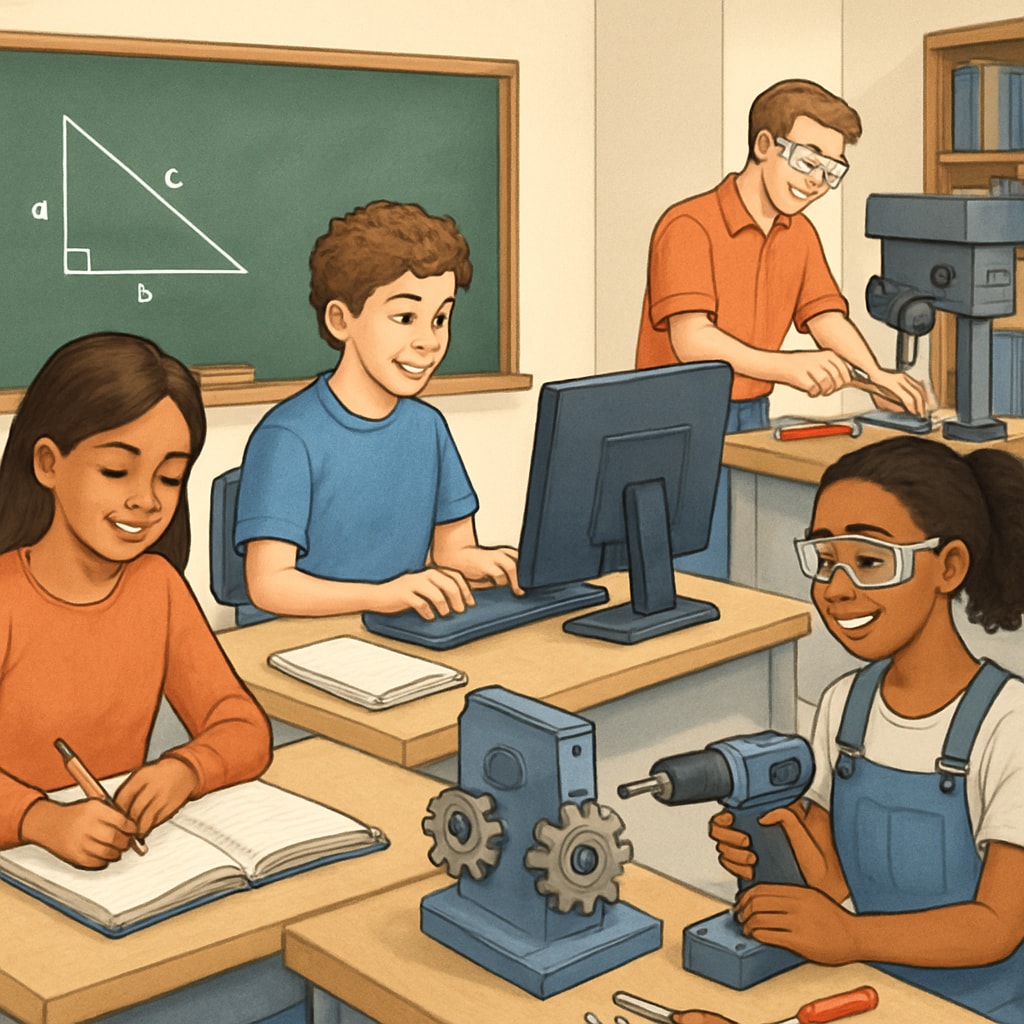In the modern K12 education system, balancing Career and Technical Education (CTE) with traditional subjects has become a critical priority. This relationship is essential not only for equipping students with career-ready skills but also for fostering a holistic educational experience. School districts across the U.S. have implemented varied models to integrate CTE into their curricula, aiming to prepare students for both higher education and the workforce. This article delves into these models, examines the challenges of maintaining equilibrium with traditional subjects, and offers actionable strategies for educators and policymakers.

How Career and Technical Education Fits into the K12 Framework
CTE focuses on teaching practical skills aligned with industry needs, such as healthcare, technology, manufacturing, and agriculture. It provides students with hands-on learning experiences that complement traditional subjects like math, science, and literature. For example, a student learning coding in a CTE program might also apply mathematical concepts from their traditional curriculum, creating a synergy between technical and academic learning.
As a result, CTE programs aim to bridge the gap between education and employment, answering calls from industries for more skilled workers. According to the Encyclopedia Britannica, vocational training, a precursor to modern CTE, has long been a critical part of workforce development globally.
Implementation Models Across School Districts
Different school districts adopt unique approaches to incorporating CTE. Some focus on standalone technical schools, while others integrate technical classes within existing high schools. Additionally, partnerships with local businesses and community colleges can provide students with real-world experiences while earning certifications or college credits. These models vary based on resources, population demographics, and industry demands.
For example, in states like California, comprehensive high schools offer CTE alongside Advanced Placement (AP) courses, allowing students to pursue both academic rigor and career readiness. Meanwhile, smaller districts may focus on regional collaborations to pool resources for specialized programs.

Balancing Traditional Subjects with Career and Technical Education
One of the biggest challenges in integrating CTE into the K12 system is ensuring that traditional subjects retain their importance. While CTE prepares students for specific careers, traditional subjects like literature and history build critical thinking, creativity, and cultural awareness.
Strategies for achieving balance include:
- Embedding academic concepts within CTE courses—for instance, using physics principles in automotive repair.
- Scheduling flexibility to allow students to pursue both CTE and traditional courses without overloading their timetables.
- Training educators to collaborate across disciplines, fostering interdisciplinary learning experiences.
According to Wikipedia, effective CTE programs should align with national academic standards to ensure students meet graduation requirements while gaining career-specific skills.
Practical Recommendations for Integration
To successfully blend CTE with traditional subjects, schools should prioritize collaboration and innovation. Key recommendations include:
- Developing curricula that align technical skills with academic learning objectives.
- Investing in professional development for teachers to create cross-disciplinary lesson plans.
- Engaging community partners to provide internships and hands-on training opportunities.
- Implementing assessment tools to measure student progress in both academic and technical domains.
By adopting these strategies, schools can foster an inclusive learning environment that supports diverse student interests and career aspirations.
In conclusion, Career and Technical Education plays a vital role in shaping the future of K12 education. By carefully balancing CTE with traditional subjects, schools can ensure students graduate with the comprehensive skill set needed for success in both higher education and the workforce. Educators and policymakers must collaborate to design programs that not only meet industry demands but also cultivate lifelong learners.
Readability guidance: Use concise paragraphs, strategic lists, and clear transitions. Maintain a balance of technical and accessible language while ensuring readability for educators, policymakers, and parents.
—


